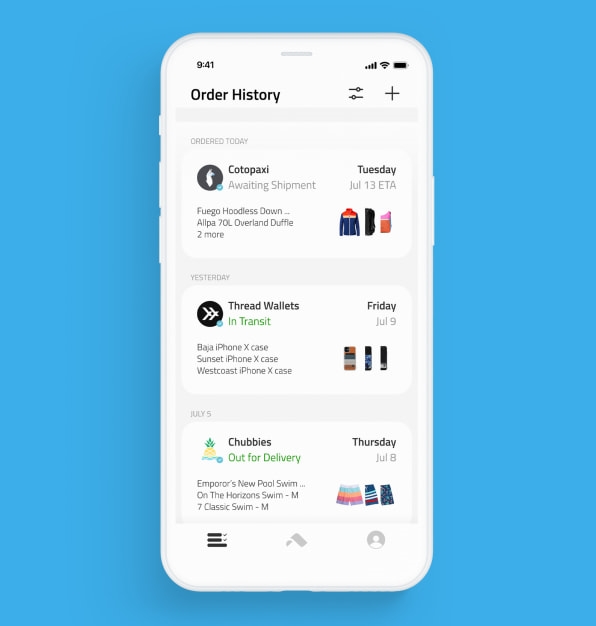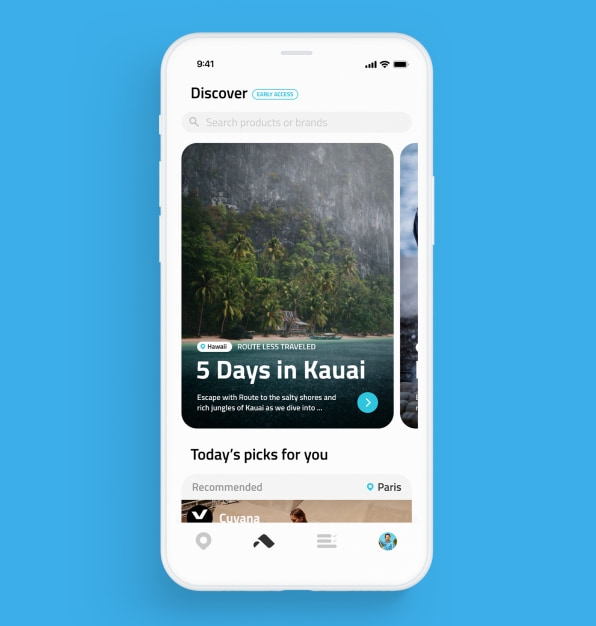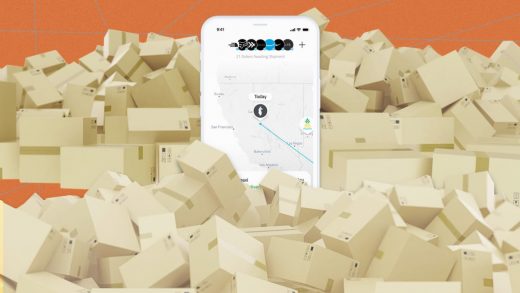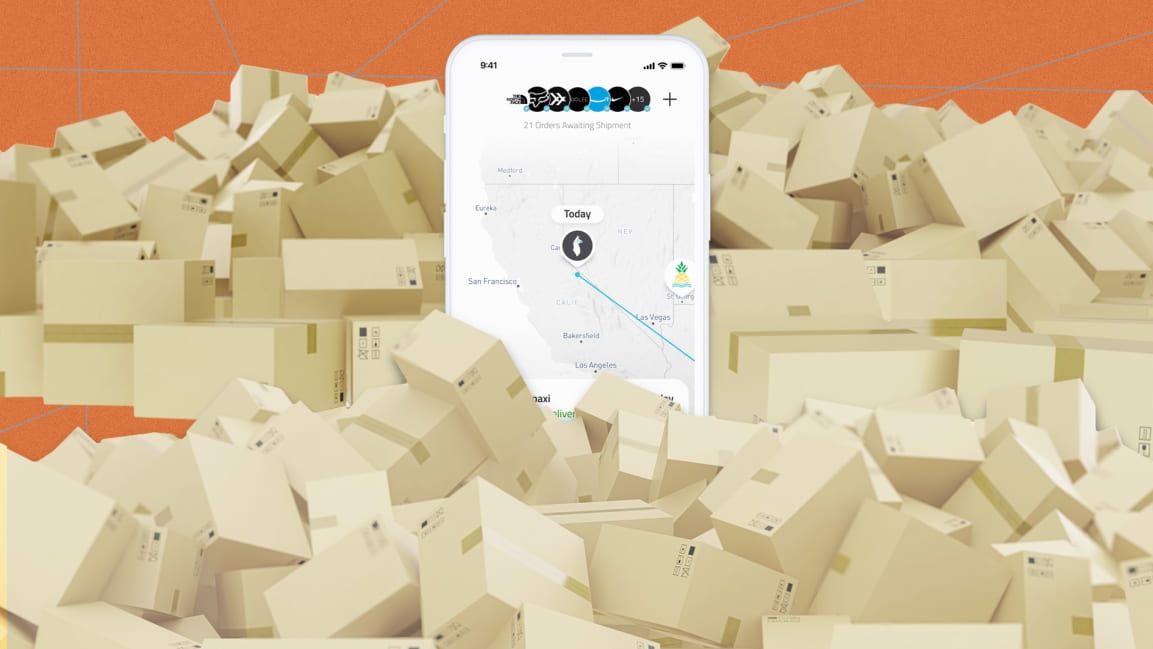This app wants to cure ‘Is my order going to arrive for Christmas?’ anxiety
The writing has been on the wall since the COVID-19 pandemic triggered a massive surge in online shopping: This holiday season is going to be a total mess.
In what many are referring to as “shipageddon,” the already strained ecosystem of merchants and delivery services will undoubtedly hit a breaking point with the final crush of holiday shopping and shipping. According to Adobe Analytics, online spending could soar as high as $189 billion this year, which represents 33% growth compared with last year. Marry that influx of orders to inclement weather, the COVID-19 vaccine taking priority among major couriers, and package theft on the rise, and a chaotic portrait of delays and incessant customer service calls comes into focus.
“Couriers flex as much as they can around the holidays, but they don’t really have the capacity to scale faster,” says Jason “Retailgeek” Goldberg, chief commerce strategy officer at advertising and PR agency Publicis, North America, and who actually co-coined the term shipageddon. “So now we’ve got FedEx and UPS growing at 8% and the e-commerce industry growing at 33%—that means, on peak days, we’re not going to be able to deliver all of the orders that we get.”
Some retailers’ guaranteed shipping deadlines for Christmas have already passed, and for others, theirs are rapidly approaching. But because of the increased volume, even their best-calculated promises may not be kept.
While it has become a cliché that the tech industry thinks there’s an app to solve every problem, there are, yes, a large number of apps designed to track packages—most having some distinctive feature, such as Slice, which flags refunds when the price of an item you’ve purchased drops, or Deliveries, which lets users automatically add package delivery dates to their calendar. Shopify this year upgraded its own tracking app for Shopify-powered stores, rebranding it Shop.

[Photo: courtesy of Route]
Amid this flurry of box watchers, newcomer Route cuts a slightly different profile. Since coming out of stealth in November 2019, the Utah-based startup has experienced considerable growth, surpassing the $50 million annual recurring revenue mark, tracking 1.6 million packages since this past Black Friday, and raising a Series A round of $35 million led by Craft Ventures.
Route’s key differentiator for consumers is that it offers customers the ability to add insurance to an order, backed by Lloyd’s of London, for just 1% of an item’s cost in case the package is lost or stolen. Route CEO Evan Walker also boasts of how the app “overcommunicates” with consumers to make sure there’s ample transparency in locating packages.
That’s important, because Route’s business is mainly helping retailers keep customers happy while shopping outside of a next-day or two-day delivery ecosystem like Amazon Prime or Walmart+.
This year’s holiday shopping blitz, when the knit hat you bought your grandma has to get there in time because you won’t be able to celebrate Christmas together, will test Route like never before. Walker claims that business doubled in one month during the first wave of the pandemic. But he can’t address the volume issue. What Route can do, though, is offer the one thing in shortest supply at this time of year, especially this year: peace of mind.
An idea outside the trunk
Walker got the idea for Route during a trip to Florence, Italy. After buying an antique trunk from a street merchant, he wanted to add insurance to protect it during its trip back to Los Angeles—but the merchant didn’t have any idea how to do that.
“I said, ‘You know what? I don’t either,’” Walker says. “It’s actually odd that no one’s ever done this before because it’s this premium-level experience that we’re getting used to from Amazon and other places.”
As a longtime e-commerce entrepreneur, starting his first company at just 14 selling software online, Walker saw an opportunity to spin insuring online purchases into a platform aimed at reducing friction at every point of the buying experience for both the consumer and the merchant.
“The number-one question for 2 billion people that buy things online is, ‘Where’s my stuff?’ We basically made shipping insurance digital across the internet, but really at the top of the funnel for us is answering, ‘Where’s my order?’” Walker says. “In order for us to do that, Route really started evolving as this kind of post-purchase experience into a full-fledged customer experience platform.”
Walker’s mission for Route is as much about helping customers manage and track their purchases as it is being a resource for smaller merchants to build loyalty and trust with those customers. For example, if a package is lost or stolen and it was covered by Route Plus, the company’s insurance offering, a customer can file a claim at the press of a button in the app, which also instantly reorders those items.
“You’re never on hold calling the merchant. You’re not calling UPS. You’re not looking at your neighbor’s house. You’re literally pressing a button where you resolve that issue,” Walker says. “We’re kind of a merchant’s best friend. We’re able to pick up the slack with a piece of technology that enables them to scale a lot more easily.”

The route ahead
Route currently serves around 3 million customers per month coming through 6,500 merchants, including such brands as the cult ice cream maker Salt & Straw.
Walker is aiming to leverage that network through its more ambitious feature, Discover, an in-app marketplace that’s curated according to a customer’s previous purchases. “The way we look at it is, we’re building a kind of a decentralized e-commerce marketplace,” he says of Discover, which is currently available in early access for select users. “We realized that if we helped solve the post-purchase experience, we end up with buying behavior that we can help spin up some really interesting product discovery insights.”
Discover is running into direct competition with Shopify’s Shop app, which, in addition to tracking pages, also curates marketplaces. Not to mention Shop has a sizable head start in terms of visibility as a frequent payment option at checkout alongside PayPal, Google Pay, and so forth. But Walker is hoping that when Discover goes live, it’ll have an edge prioritizing storytelling with each brand page through video and content.

“If I look at the problem with e-commerce, if I go to Amazon and all these marketplaces, I don’t know who these brands are. I don’t know what they stand for. I don’t know if they’re the cause behind their product or if it’s quality made,” Walker says. “But if we could actually tell you the story of these artisans and why they’re passionate about building this shoe company, this bag company, and the materials they’re making them out of, we can emotionally connect users to products in a way that I think is very rarely done today.”
Walker also notes that through Discover, customers are taken directly to the merchant’s site, sidestepping the often exorbitant commission fees Amazon typically charges.
“We kind of look at ourselves as like the Amazon antagonist, if you will,” Walker says. “Essentially, our aspiration is to become the homepage for every brand in the world that doesn’t like to sell their products inside of a marketplace.”
The Christmas 2020 roadblock
While Route continues to build out Discover, the more immediate task at hand is getting through a holiday season like no other. Route’s insurance protection plan and even its most recent feature allowing you to share your order in the app with, say, a neighbor so they can keep an eye out for your package too, can certainly mitigate the inevitable missing or lost packages during shipageddon. But being the middleman between the customer and the merchant could make Route the whipping boy on both sides when things go awry.
“We actually have a pretty acute problem at the moment where, however consumers track packages, whether it’s with an app or whether it’s with a carrier’s website, keeping that [tracking] data accurate becomes problematic as the carriers get at peak capacity,” says Retailgeek’s Goldberg. “And apps are only as good as the data that they’re given.”
(67)



